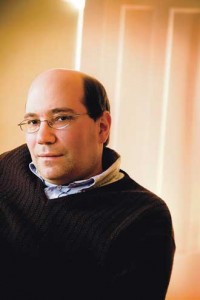
By Gil Troy
As students return to university this month, the main focus on campus is on the dynamic between students and their professors. “Who’s teaching the course?” is the question on so many students’ lips. But they often give or get a partial answer. The truth is, at McGill and most large universities, students are not taught only by the professor, the marquee name on any course. In the many large lectures that abound, students are taught – and their experiences are often dramatically shaped – by teaching assistants, TAs, who play a critical role in helping the university function.
Unfortunately, most of the recent public attention regarding teaching assistants has been negative. Teaching assistants held a strike at McGill in 2008. Other universities have endured strikes as well. Unionizing TAs gives the impression of a strife-ridden relationship between TAs and professors. This is misleading. Universities thrive because of the warmth and co-operative spirit characterizing most professor-TA relationships
In fact, ideally, the professor is the TA’s adviser as well. By researching and teaching together, the professor and TA integrate the university’s two essential functions – discovering knowledge and transmitting it. The relationship, at its best, is delightfully old-fashioned, with the TA serving an apprenticeship under the mentoring professor’s watchful eye.
Of course, reality often intrudes. For example, at McGill hundreds of undergraduates take U.S. history courses but very few graduate students study U.S. history. Teaching assistants come from other fields, and the relationship between the professor and the TA is less multi-dimensional. Still, the TA is not only helping with discussion sections and grading, but is learning by doing and being coached by a senior teacher.
At McGill’s history department this fall, we are particularly sensitive to the importance of this relationship because one of our superstar TAs during the last few years, Thomas Brydon, died tragically in an automobile accident this summer, along with his girlfriend Laura Nagy. Tom started studying for his master’s degree in 1999. During that decade, he TAed in numerous courses and, most recently, had started teaching his own courses. As he taught, he worked on and completed his Ph.D in British cultural history: “Christ’s Last Ante: Charles Booth, Church Charity and the Poor-but-Respectable.”
I met Tom a year ago as I headed into a difficult semester filled with much travelling – and teaching. I had requested a top-notch TA who could substitute for me if ever I was away or delayed. When the department chair at the time, Catherine LeGrande, assigned me Brydon, a British historian whom I did not know, I was skeptical, knowing the semester he (and I) faced. My skepticism increased when I called him, and good Canadian that he was, he postponed our meeting because he was leaving on a canoe trip. I wondered: “What’s this Canadian bloke who specializes in England going to teach my students about the U.S.?”
Let’s be honest, historians, and certainly this history professor, are lone rangers. Most of us do our research, writing and teaching alone. To share the podium with someone else, to share responsibility with someone else, requires us to stretch outside our comfort zones. We are also thematic chauvinists, rooted in our specialties and doubtful that anyone who has not been steeped in our subject can understand us – let alone teach our material.
LeGrande reassured me, saying, “You’re going to love this guy, he is fantastic.”
If anything, LeGrande undersold him. Tom entered this ambiguous, fluid situation with his natural affability, his considerable experience as a teacher, and his strong vision as an historian – and thrived. He plunged into the work with great enthusiasm, sound judgment, and remarkable talent. Students loved him, respected him and learned from him – as did I.
In addition to mastering the mechanics of the course, Tom also mastered the material. The lectures he prepared were insightful, funny, energetic and well-received.
Tom should have lived to a ripe old age, continuing to teach and learn with the zeal that marks a great teacher and scholar. Coincidentally, highlighting that chain of transmission that links one scholarly generation to another, my graduate school adviser and mentor, David Herbert Donald, died at the age of 88, just weeks before Tom died at 33. Both left unfinished books – and resonant legacies – reminding me that great teaching turns us all into master mimics, as juniors imitate their seniors who imitated their seniors when they were juniors.
To honour Tom’s memory, all of us in the university community, professors, students, and administrators, should reflect on the importance of our TAs, as essential educational colleagues today and living links to tomorrow. And if those who control university budgets could invest more in hiring additional TAs and lowering the teacher-student ratio, that would be an ever more glowing, pragmatic, and most needed tribute to Tom Brydon, the kind of teacher we all wish we had, and the kind those of us in the education business should always aspire to be.
This article first appeared in the Montreal Gazette Sept. 8 2009
Gil Troy is a professor in the department of History at McGill University
